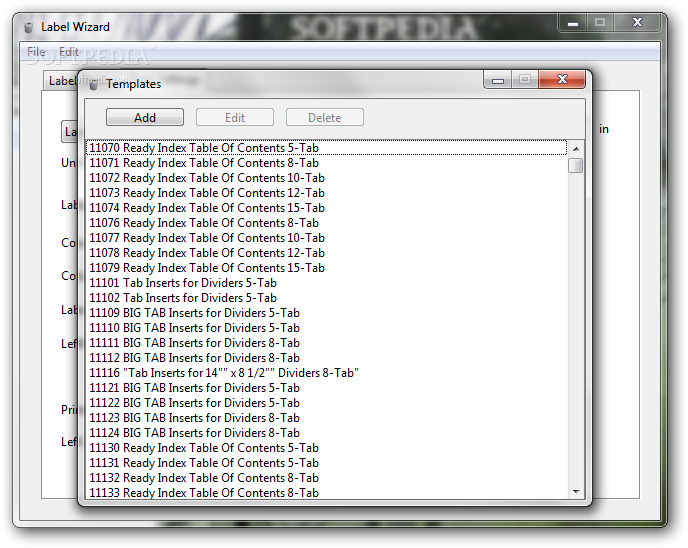

Answer Yes to open the Mail Merge dialog. When you choose to print the document, you will be asked if you want to print a form letter. You can save and/or print the label document. This displays the fields in a more visible manner, so that you can arrange and edit label contents more easily. When you see the label document, you might want to temporarily enable View - Field Names.

Now you only need to work on the first label on the labels document, then click the Synchronize button to copy your work to every label of the document. If you enable this, once you leave the Labels dialog box a small window opens with a Synchronize button.

Optionally, if you want to type more text, apply formatting, or insert images and line art, you should enable Synchronize contents on the Options tab. You can press Enter to insert a new line, and you can type any character to insert fixed text. Click the button that shows a left arrow to insert the database field into the Label Text box.Ĭontinue to select and insert database fields if you want more fields on every label. Select a database field of which you want to print the contents. On the Labels tab page, select the format of the label sheets you want to print on.Ĭhoose the database and table from which to get the data. Tabbing or pressing Enter past the last field will submit the form and insert the contents into the table.Choose File - New - Labels to open the Labels dialog. To open a blank record, click the New (blank) record icon at the bottom of the screen. Switch to Form View (either by clicking the View button on the Ribbon, or the Form View icon at the bottom right of the screen) and open a blank record. Go ahead and use the form to add new records to the database - now's your chance to add something from the last 25 years ). Then right-click and select Delete from the contextual menu. To delete the old control (and its label) click on each one while holding down the Shift key. You have the option of keeping the ArtistId form control or removing it. Type a label for the combo box and click FinishĪccess will close the wizard and you'll see the form with the new combo box. So even though the user only selected the artist's name from the combo box, the ID is what's inserted into the table. This means that the ArtistId for the selected artist will be inserted into the Albums.ArtistId field. Now click the form in the location that you want the combo box to be inserted. Using a Microsoft Access Combo Box to Search for a Record: In the previous. However, the form will still insert the ID into the Albums.ArtistId field.Ĭlick the Combo Box icon from the Design tab on the Ribbon. Set Lookup wizard as the Edit as type for the Make and Model fields.
This will allow users to select artists by their name, rather than their ID. When multiple Quotes records are added to the Sales Order Wizard grid M1 will dynamically add an Allow MultipleHere, we will add a combo box containing a list of all artists' names to the form. Whenever we enter a new album, unless we remember the ID of every artist, we'll probably need to open up the Artists table to look up the ArtistId for the album we're entering. This means we'll need to enter the artist ID for every album we enter. The artists' names are nowhere to be seen. This is because the only artist information on the form is the ArtistId. We'll have to remember the artist IDs of all artists. Now that we've created our form, we could go right ahead and enter data.īut we might encounter a small issue. Note The Lookup Wizard creates three types of lists depending on the choices you make in the wizard: a lookup field, a values list field, and a multivalued field. Access provides a "Combo Box Wizard" to walk you through adding a combo box to a form. Click in the Data Type column for that row, click the arrow and then, in the drop-down list, select Lookup Wizard.


 0 kommentar(er)
0 kommentar(er)
